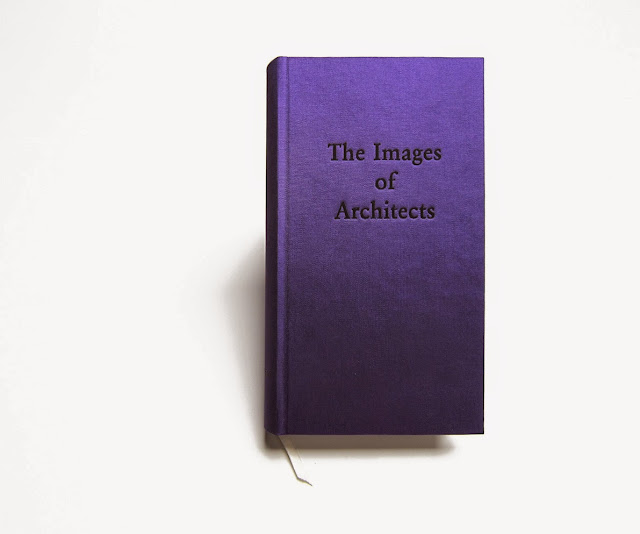Book Review: The Images of Architects
The Images of Architects: The Visible Origin of Architecture edited by Valerio Olgiati, published by Quart Verlag, 2013. Hardcover, 424 pages. (Amazon)

How does one "read" a book entirely of images? It may not be such a hard question when it comes to an artist's monograph or a photographic essay, but this book of "44 collections by unique architects" does not offer similar formulas for interpretation. With typically 10 images per architect, there isn't enough information to make conclusions about each architect or see a consistent strand in the images selected. But this does not stop the book from becoming a joy to look at and attempt to understand.
Even though images are everywhere these days, the ones collected here are, at their heart, images of inspiration, not those devoted to marketing or advertising; which, if you think about it, is what the architectural imagery in publications (print and online) are ultimately about: selling a building and/or architect as something of value. Valerio Olgiati, the Swiss architect who asked the 44 architects to contribute "important images that show the basis of their work" for last year's Venice Biennale, taps into this realm of architecture culture through the selection of architects (being included is some sort of status symbol), but we do not see (in most cases) their work. This focus on the inspirational images of respected architects means that every page-turn leads to a surprise, and that every image holds some weight in at least one architect's imagination, prompting us to find what is of value in each image.
Given the roughly 44x10 images included in the book, a thorough reading of each and every image is only recommended for those who think of the book as seriously as a Bible, taking in the whole thing over the course of a year. My more rapid pace of ingestion led to the discovery of certain thematic consistencies in the 44 collections:

How does one "read" a book entirely of images? It may not be such a hard question when it comes to an artist's monograph or a photographic essay, but this book of "44 collections by unique architects" does not offer similar formulas for interpretation. With typically 10 images per architect, there isn't enough information to make conclusions about each architect or see a consistent strand in the images selected. But this does not stop the book from becoming a joy to look at and attempt to understand.
Even though images are everywhere these days, the ones collected here are, at their heart, images of inspiration, not those devoted to marketing or advertising; which, if you think about it, is what the architectural imagery in publications (print and online) are ultimately about: selling a building and/or architect as something of value. Valerio Olgiati, the Swiss architect who asked the 44 architects to contribute "important images that show the basis of their work" for last year's Venice Biennale, taps into this realm of architecture culture through the selection of architects (being included is some sort of status symbol), but we do not see (in most cases) their work. This focus on the inspirational images of respected architects means that every page-turn leads to a surprise, and that every image holds some weight in at least one architect's imagination, prompting us to find what is of value in each image.
Given the roughly 44x10 images included in the book, a thorough reading of each and every image is only recommended for those who think of the book as seriously as a Bible, taking in the whole thing over the course of a year. My more rapid pace of ingestion led to the discovery of certain thematic consistencies in the 44 collections:
- Whole > Sum of Its Parts (Preston Scott Cohen, Atelier Bow-Wow, J. Mayer H., Junya Ishigami): It's about the 10 images together rather than individual images. Cohen documents one bridge in 10 photos, and Atelier Bow-Wow present buildings and landscapes full of people, for example.
- A Sense of Place (David Adjaye, Miroslav Sik): The images document a particular place (Adjaye looks at the architecture and landscapes of Africa) to gain an understanding in the architect's mind.
- Drawing Inspiration (Alejandro Aravena, Alvaro Siza, Richard Meier): Inspiration and understanding comes about through the architect's sketches of the outside world. Meier's collages border on the egotistical, since they are the only example of an architect's work in the whole book.
Comments
Post a Comment
Comments are moderated for spam.